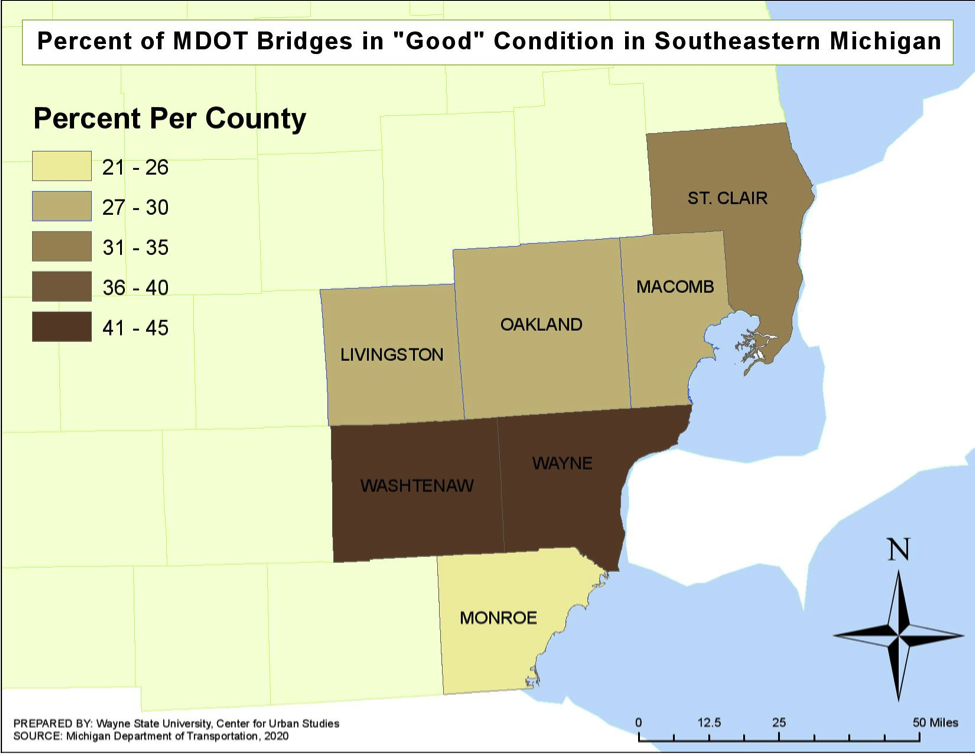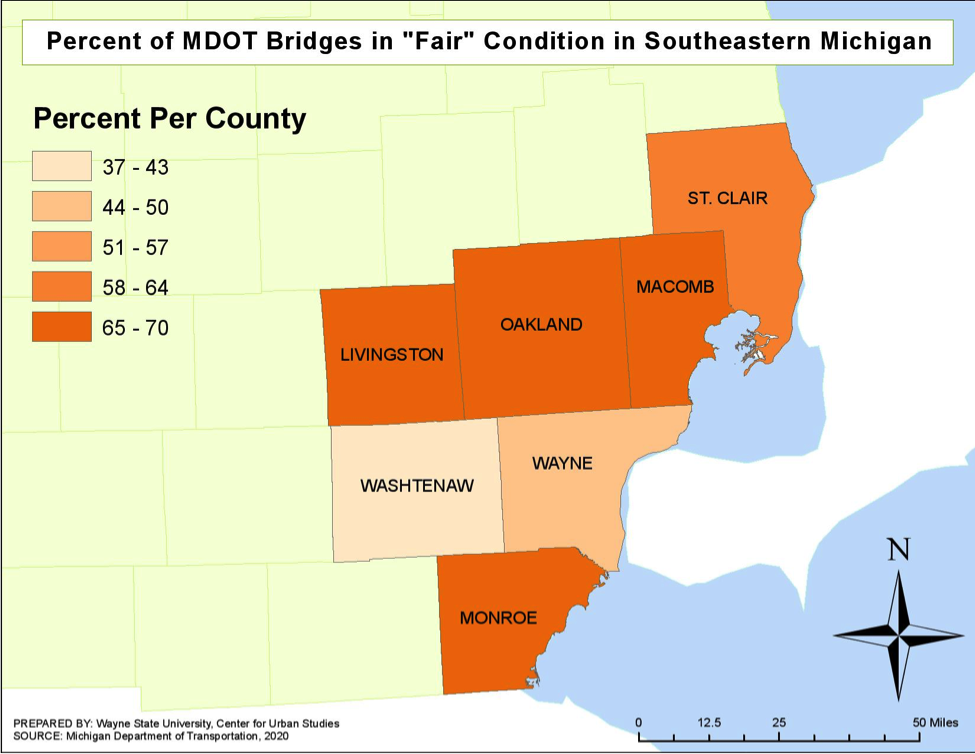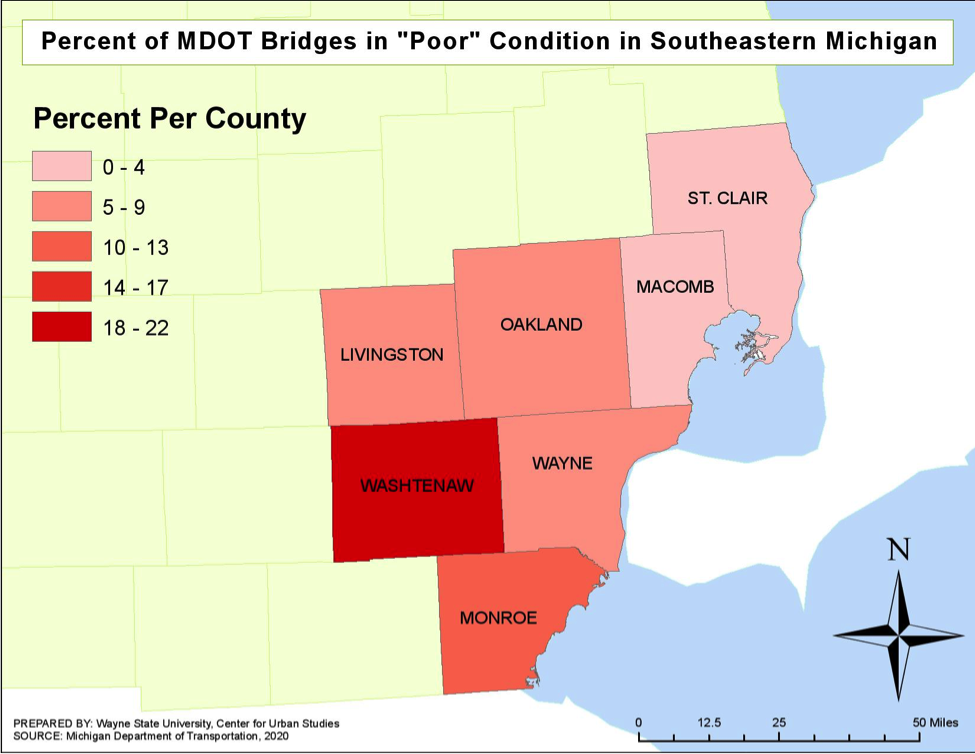From roads to dams to bridges, infrastructure in Michigan is in desperate need of funding. Just recently, a Wayne County owned and operated bridge that allows people to travel to and from Grosse Ile was shut down for at least six months so that a portion of the bridge could be removed and replaced. This is just one of many examples of failing infrastructure in Southeastern Michigan, and throughout the State as a whole. In this post we show what percentage of the Michigan Department of Transportation controlled bridges in Southeastern Michigan are in good, fair and poor condition. The data is from the Michigan Department of Transportation for 2020.
In the first map we see the percentage of MDOT bridges in each county that are considered to be in good condition. According to the National Bridge Inventory database, a bridge is considered to be in good condition when it only requires routine maintenance. Wayne County has the highest percentage at 44.5 percent, followed by Washtenaw County at 43.5 percent. Monroe County has the lowest percentage of bridges considered to be in good condition at 21 percent.

Monroe County was one of four counties in the region to have more than 66 percent of its bridges considered to be in fair condition. Both Monroe and Oakland counties have 66.1 percent of their bridges considered to be in fair condition, but Macomb County has the highest percentage of bridges in fair condition at 70.2 percent. In Livingston County 66.5 percent of the roads are in fair condition. A bridge is considered to be in fair condition when preventative maintenance and/or minor rehabilitation is needed.

Washtenaw County has highest percentage of bridges in poor condition at 22.5 percent, followed by Monroe County with 12.9 percent of the bridges in poor condition. Macomb County reported that 0 percent of the bridges there are in poor condition. A bridge is considered to be in bad condition when major or emergency rehabilitation is required or if a bridge is closed due to its condition.

There is no question that Michigan’s infrastructure funding needs an overhaul so the citizens or out-of-towners traveling on roadways and bridges in the State are safe. Earlier in 2020 it was announced that the Michigan Department of Transportation planned to spend $7.3 billion on state highways and bridges over the next five years; this is an increase from the $3.8 billion that had originally been planned. The $3.5 billion increase is a result of a bond initiative Gov. Gretchen Whitmer announced. The majority of road and bridge funding in the State is received through federal and state tax dollars. Keep watching, though, because some of this funding may threatened because of the Covid-19 pandemic and the effect it is having on budgets.